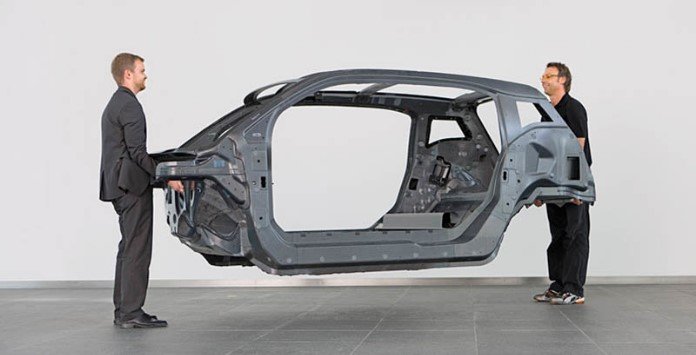AUTONEWS
 |
| In the photo a battery chassis made of carbon |
While the whole world seeks to develop a culture of protecting the environment, electric cars are one of the most important tools in this process, as the car is one of the biggest villains when it comes to pollution, one billion cars in the world pollute absurdly.Electric cars operate without emitting any polluting gas, yet barriers to the mass production of electric cars are preventing the transition to this technology from occurring faster.One of the biggest of these barriers is the problem with lithium batteries, the most effective and used by these vehicles. This is due to the low durability of these batteries, which need to be discarded and replaced. Lithium batteries are expensive as well as dangerous for the environment and difficult to dispose of without further pollution. That's the big dilemma.
Transformation of carbon chassis into battery
Meanwhile a team of researchers may have found a solution, turning the carbon chassis into a chassis and battery compound by injecting lithium into that chassis.Researchers at Chalmers University of Technology in Sweden are developing the injection of lithium, the metal used in electric car batteries, into structures made of carbon fiber.This all to make the structure of the car, the battery itself. The article detailing the research was published in the journal Multifunctional Materials.The carbon fibers thus show their utility as high power lithium battery anodes. This opens up a great perspective for its use as a structural electrode, that is, fulfilling two roles. These two roles are part of the car's support structure, as well as being a backup power system.The researchers tested several different carbon fibers to gauge their electrochemical performance through their microscopic structures. With these tests it was possible to know what their feasibility would be to serve as a multifunctional structure.
The fibers tested with smaller and more disorganized carbon crystals have better electrochemical capacities, while those with larger and more approximate and organized carbon crystals are more rigid in structure and have lower electrochemical performance.According to Leif Asp, a professor of materials and computer mechanics at Chalmers University of Technology, "We now know how to make multifunctional carbon fibers to achieve high energy storage capacity and to ensure sufficient rigidity."A small reduction in stiffness is not a serious problem when it comes to industrial application. Asp also states that "The market is currently dominated by very expensive carbon fiber compounds whose rigidity fits the use of aviation but exceeds the needs of the automotive industry."Research indicates that if the carbon fibers are more rigid, they also have better electrochemical properties. Carbon fibers with lower electrochemical properties are better in the mechanical aspect. That's why researchers are beginning to work alongside the automotive industries as well as aviation for real and definitive testing.According to Asp, for this system to work in aviation, there is a need to increase the thickness of the carbon fiber components to improve stiffness.Another result would be an increase in the structure, and a consequent increase in the energy storage capacity.In the case of the automobile industry, the ideal is to improve all the factors. These factors are resistance, electrochemical properties and weight. This is important so that the future cars that will use this technology have at the same time greater security and capacity of rFinally, Asp states that "It is about defining a new design strategy, optimizing the individual components". The traditional lithium batteries still perform better, but the great advantage of the new ones is the safety and its better structural support.eserve of energy, for more time.
Renewable Energy Magazine-Brazil

Nenhum comentário:
Postar um comentário